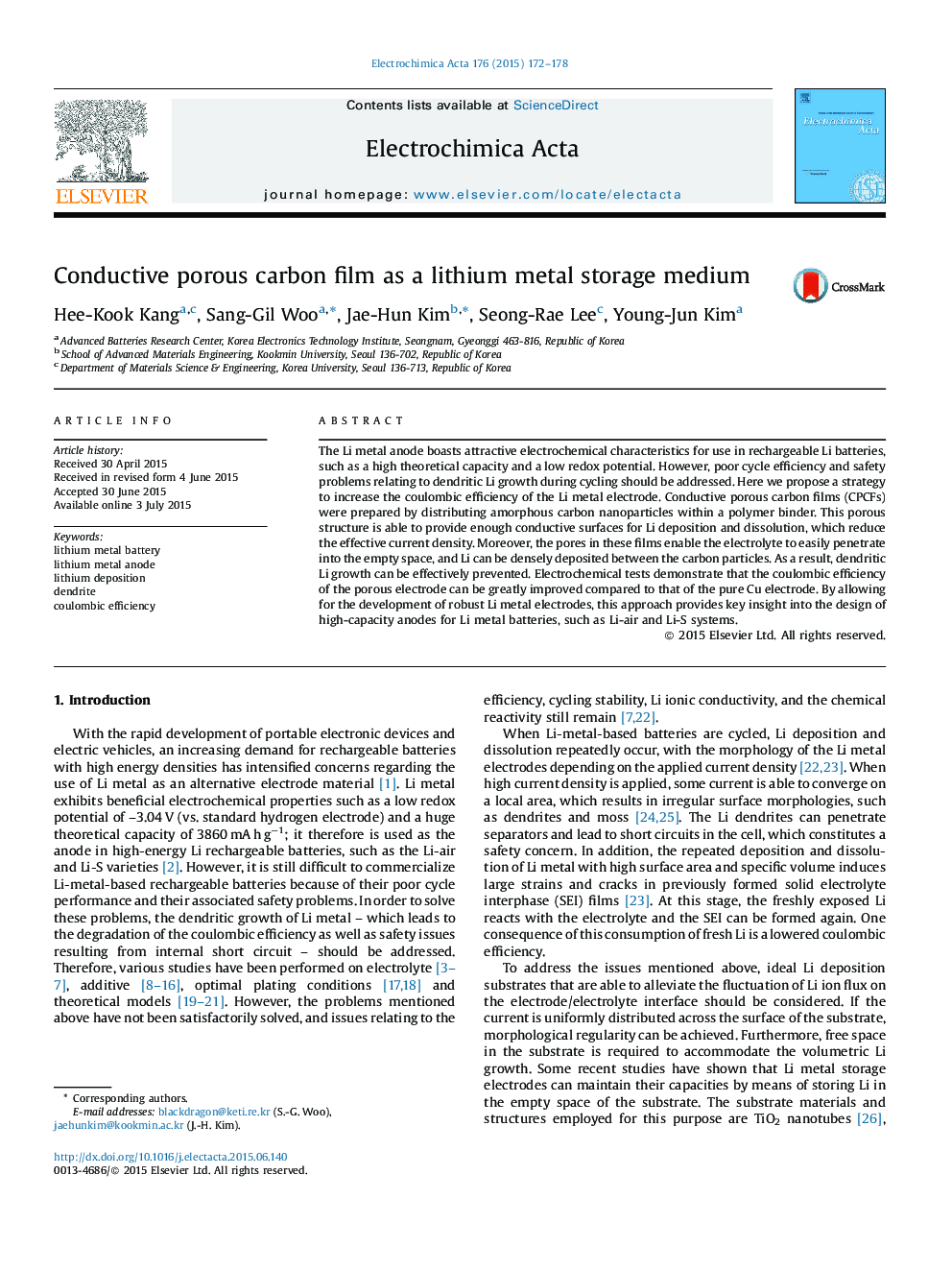| Article ID | Journal | Published Year | Pages | File Type |
|---|---|---|---|---|
| 6610820 | Electrochimica Acta | 2015 | 7 Pages |
Abstract
The Li metal anode boasts attractive electrochemical characteristics for use in rechargeable Li batteries, such as a high theoretical capacity and a low redox potential. However, poor cycle efficiency and safety problems relating to dendritic Li growth during cycling should be addressed. Here we propose a strategy to increase the coulombic efficiency of the Li metal electrode. Conductive porous carbon films (CPCFs) were prepared by distributing amorphous carbon nanoparticles within a polymer binder. This porous structure is able to provide enough conductive surfaces for Li deposition and dissolution, which reduce the effective current density. Moreover, the pores in these films enable the electrolyte to easily penetrate into the empty space, and Li can be densely deposited between the carbon particles. As a result, dendritic Li growth can be effectively prevented. Electrochemical tests demonstrate that the coulombic efficiency of the porous electrode can be greatly improved compared to that of the pure Cu electrode. By allowing for the development of robust Li metal electrodes, this approach provides key insight into the design of high-capacity anodes for Li metal batteries, such as Li-air and Li-S systems.
Related Topics
Physical Sciences and Engineering
Chemical Engineering
Chemical Engineering (General)
Authors
Hee-Kook Kang, Sang-Gil Woo, Jae-Hun Kim, Seong-Rae Lee, Young-Jun Kim,
